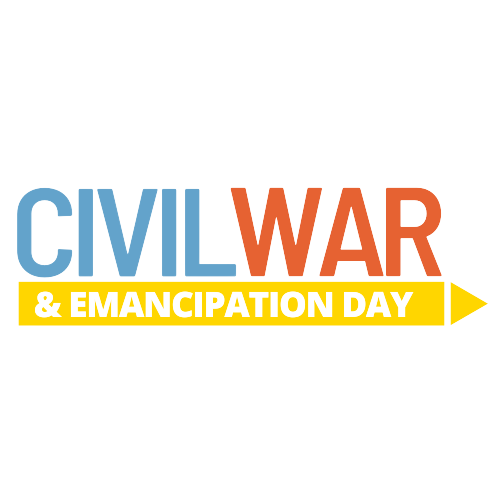Who We Are
Richmond’s Journey, from the end of slavery and the Civil War to today.
Since 2009, Civil War & Emancipation Day (CWED) is coordinated by member organizations of Richmond’s Journey (formerly the Future of Richmond’s Past). We are a collaboration of Richmond’s museums, historic sites, national parks, cultural and tourism organizations, and educational institutions. Richmond’s Journey and its member organizations have sponsored public programs, special events, educator professional development, and inclusive conversations to advance a better understanding of our city’s shared history. While some events take place throughout the year, most events happen in the first week in April around the anniversaries of key 1865 events: the Confederate evacuation of Richmond (April 2); the emancipation of enslaved Richmonders and the arrival of U.S. troops (April 3); and Abraham Lincoln’s tour of the city (April 4).
Core Members:
American Civil War Museum
Black History Museum & Cultural Center of Virginia
Elegba Folklore Society
Friends of East End
Library of Virginia
Richmond National Battlefield Park
Richmond Public Library
Richmond Public Schools
Richmond Region Tourism
Sacred Ground Historical Reclamation Project
University of Richmond
Untold RVA
The Valentine
Venture Richmond
Virginia Commonwealth University
Virginia Museum of History & Culture
Virginia Union University

The History
On Sunday morning, April 2, 1865, while attending a church service at St. Paul’s near Richmond’s Capitol Square, Confederate President Jefferson Davis received word from General Robert E. Lee that he could no longer hold his position protecting Petersburg and Richmond. The Confederate government and military evacuated that night. To prevent U.S. forces from capturing stores of supplies, the Confederate military set fires in downtown warehouses which rapidly spread out of control, creating a path of destruction that consumed the riverfront, shops, and homes.
The next morning on April 3, a small contingent of city officials rode to Richmond’s outskirts to surrender a city in flames and in chaos. The Union army, including United States Colored Troops, entered Richmond and helped to extinguish the fires and restore order.
Emancipation Day, Richmond, VA, April 3, 1905 (Library of Congress)
With them came the emancipation of thousands of enslaved African descendants in the city, who greeted U.S. troops, especially USCTs, with jubilation. Richmond’s notorious markets – traders in unpaid labor throughout the South – were closed forever. In 1866, Black Richmonders began the tradition of commemorating the end of slavery by celebrating Emancipation Day on April 3.
On April 4, President Lincoln, accompanied by his son, Tad, visited a still-smoldering Richmond. As he moved through the city, he was surrounded by a growing and jubilant crowd of newly freed people who were eager to greet the man they regarded as “The Great Emancipator.”
For four years, the city had been the epicenter of the Civil War as the capital of the Confederacy and the target of Union armies. The capture of Richmond brought some of the most dramatic changes in the city’s history. It also foreshadowed the reunification of the United States, the end of almost 250 years of American slavery, and the beginning of an uncertain journey into freedom for African Americans here and across the country.

